This time three years ago – as described in this Thursday throwback post by Jolisa – Auckland was deep into experiencing another prolonged shift in perspective around how a city can look and feel. .
A lot has changed since then; and a lot hasn’t. As a recent guest post by Tommy de Silva highlighted, the idea of low-traffic neighbourhoods is still on the table for all sorts of reasons, and remains one of the most cost-effective public health policies we could pursue. It shouldn’t take a pandemic.
The quiet streets of Level 4 are here again. City-dwellers are waking up to birdsong and falling asleep to rare silence. People who need to drive for essential reasons are enjoying magically congestion-free journeys. And in our neighbourhoods, we’re once again seeing the everyday world through different eyes.
While Covid is a looming cloud nobody wished for, quieter streets are a lockdown silver lining: a low-key stress-relief element that most people have had free and direct access to, during an undeniably stressful time. They’re also a rare glimpse of a low-traffic way of life, reminding us how much traffic usually fills our thoughts, our ears, our public space.
As Holly Walker put it in The Shared Path, her November 2020 report for the Helen Clark Foundation:
“It is important not to romanticise the lockdown experience… Yet the lived experience of quieter streets during lockdown has led some people to ask: now that we have experienced low-traffic streets and neighbourhoods, and found that we like them, what can we do to keep them, without the need for lockdown conditions?”

What’s different about Level 4 streets?
It’s striking how quickly adaptable we are. Level 4 finds people instinctively reallocating street space (and parking lots) for local exercise and fresh air. I wondered if there might be a bit more driving this time, as more of us head out for vaccinations and Covid tests. But I did a Backyard Bike Count on Sunday, and just as in April 2020, fully 2/3 of local traffic was people on foot or on wheels, vs. 33% vehicles. How is it where you are?
One surprising thing is that despite last year’s lessons learned report about fighting Covid via street space reallocation, and the report into the link between transport and mental health, there didn’t seem to be any ready-to-go plans to create safe street space in an equitable way. Not even lower speeds, which would help take pressure off our health and emergency services by reducing the risk of crashes. (Our government is great at articulating why and how we can keep each other safe, especially the most vulnerable; so this is a puzzling blind spot.)
Lockdown brings its own stresses, no doubt about that; but it also removes others. Sometimes you don’t notice a particular stress until it vanishes. Biking along my local main road in Level 4 (a 50khm arterial, usually busy, and wide enough to land an aircraft on) I realise I’m missing the usual dread of being knocked into passing traffic by someone carelessly opening the door of a parked car.
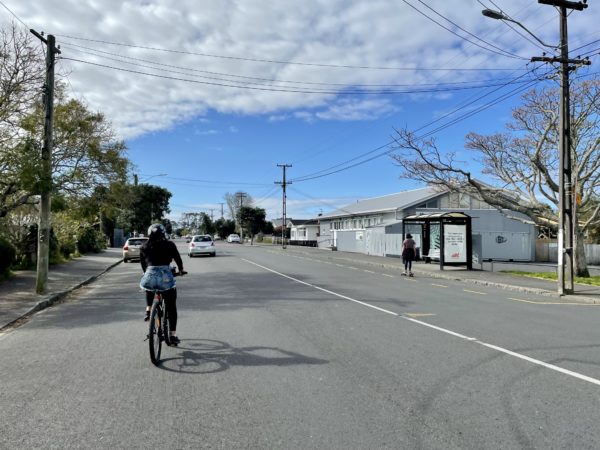
Likewise, there are possibilities you don’t see until they’re suddenly happening:
- people crossing the road at their own pace, rather than scurrying apologetically or being tugged along
- joggers, dog-walkers and passersby borrowing street space for more courteous overtaking
- skateboarders, roller-skaters, families on bikes, leaving the footpath and choosing the street
- people in mobility scooters enjoying uninterrupted journeys, with cars not parked or idling on the footpath
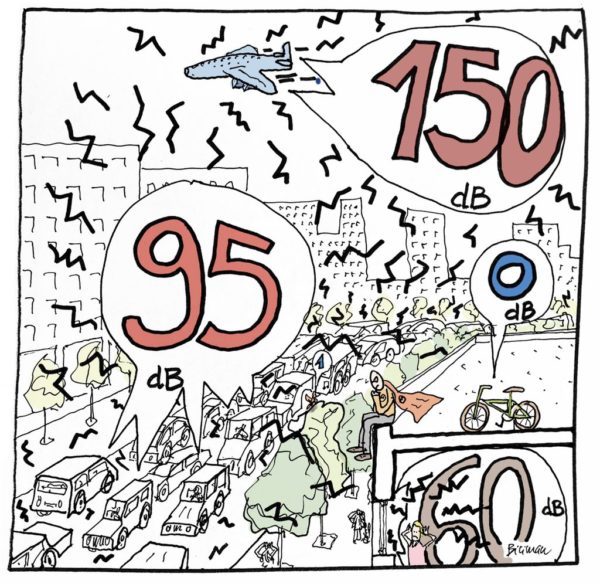
One of the most striking changes is heard, rather than seen. A single car approaching at the usual speed suddenly sounds like a plane coming in for a landing. How do we ordinarily cope with this level of noise? When did we decide it was “normal” for neighbourhoods?
You can hear birds and human voices from a distance. (The hush also registers on underground seismometers, and life becomes more peaceful underwater, with dolphins audible from a whole kilometre further away than usual).
To quote a small child on a bike I heard in the early days of Level 4, approaching from half a block away: “Mummy, it is MUCH more quieter out here this day!”

Time to bookmark these feelings
With or without any extra safety measures in place, our quiet streets give us a real-time simulation of what low-traffic cities feel like, and how they work a little better for everyone…
- If you’ve driven anywhere in Auckland in the last couple of weeks, you’ll have felt the relief of congestion-free travel that comes from reducing car trips to the essentials. (Fun fact: the Dutch are regularly ranked as the happiest drivers in the world – because everyone who doesn’t need to drive, isn’t driving).
- If you’ve caught the bus, you’ll have noticed how easily the routes run on time when there’s less traffic on the road. With congestion out of the way, every lane can be a bus lane.
- If you’ve been for a walk, roll, or bike ride in your neighbourhood to keep your spirits up, you’ll have felt the confidence and connection (albeit distanced for now) that low-traffic streets offer to young and old.
- If you’ve sent kids out for some solo fresh air without even thinking of warning them to be careful of cars – or noticed there are way fewer “sneaky driveways” than usual, you’ll have spotted the way low-traffic streets empower children.
- If you’ve walked to the shops to get your steps in, or worked from home, or made arrangements to have something delivered, or batched up a few errands to save on car trips, or even noticed you have an extra hour in the day because you don’t have to deliver kids to or from school – you’ll have clocked how possible it is to trim a little driving, and thus a little stress, out of your day.
- If you’re just sitting quietly at home listening to the birds, you’ll know how the natural world floods back into our senses when traffic drops. (Also, while nobody officially keeps track of how many pets are lost to traffic each year, I’m willing to bet it’s a lot less at the moment – and we know how important those little critters are to our quality of life.)
Make note of these feelings and insights, and all the small wins you notice in this quiet time, because they’re going to come in really handy over the next few years.

Opportunities ahead
In Aotearoa so far, our quiet streets have largely been temporary, evaporating like a dream as soon as life returns to “normal”. But cities around the world are leaning into the opportunities. In the UK, each week seems to bring an announcement of a new ‘low-traffic neighbourhood’ or pedestrianised shopping street somewhere.
So far, the research suggests they’re achieving results (safer streets, cleaner air, equitable outcomes), and public feedback (including election results!) suggests that on the whole, these changes are welcome. Not so much “build back better” as “there’s no going back!”
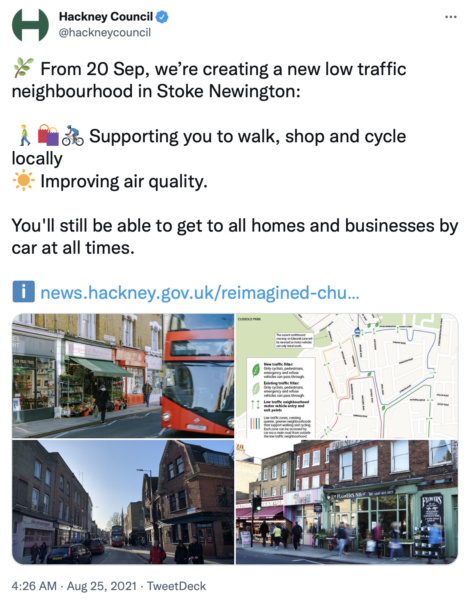
More than ever, we need breathing room in our cities, for our physical and mental health. And in the teeth of extreme-weather events we also need to feel confident we’re doing something to tackle the other great stress-factor of our times: climate change.
The future weighs most heavily on children. So any way we can give young people a better life right now has got to be a good thing.
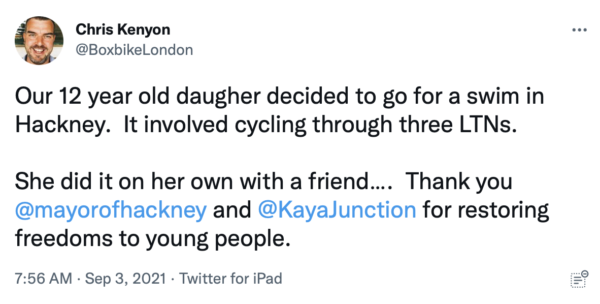
A quick refresher on LTNs
The basics of a low-traffic neighbourhood are, well, pretty basic. Every house and shop within the LTN can still be reached by car or emergency vehicle – but through-traffic is channeled along arterial routes. and side streets are strategically ‘filtered’ to deter rat-running.
With short-cuts out of the equation, using a car for a local trip might take a few minutes longer – but the trade-off is quieter streets all round. Take away through-traffic, and streets become more attractive to walk, bike, scoot or roll, for local trips like school, shops, the bus stop… or purely for fresh air and pleasure, like in lockdown.
This, in turn, reduces traffic in the wider area, even on the main roads, as people’s travel choices shift over time. For more immediate equity and effectiveness, LTNs are best delivered in batches, and linked together with a citywide circulation plan for good, frequent public transport. They also go well with decongestion-charging.
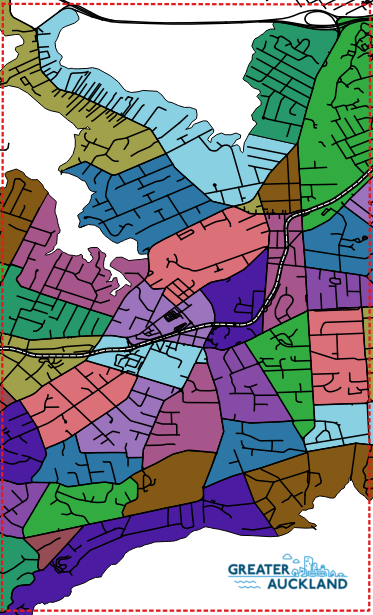
In the last year, Aotearoa’s been giving LTNs a go, under the Innovating Streets For People programme. While some demonstration projects have been prematurely and unfortunately nipped in the bud, others have quietly blossomed into exemplars of the way ahead.
Low-traffic neighbourhoods aren’t new in New Zealand
We’ve had low-traffic neighbourhoods across the motu for quite some time; we just don’t tend to call them that. You may know them as:
- Cul-de-sacs, which make excellent locations for street parties and play streets, as well as traditional places to learn to bike, skate, or play pick-up ball games.

An Auckland play street in progress (Image: Healthy Families Waitakere)
- Historic traffic calming features, now a cherished feature of many ‘leafy burbs.’

- Gated subdivisions designed to keep out through-traffic, including shutting the gates overnight, and retirement villages whose smooth 10km/h walkable streets are great for residents and visiting grandchildren alike.

- Old-school neighbourhoods that butt up against hard edges: motorways, railway lines, golf courses, creeks, parks – because there’s no through access, there’s no through-traffic, and streets become common space.

- The laneways and courtyards and mews of the central city and Wynyard Quarter.

Tiramarama Way in Wynyard Quarter (Image: Heart of the City) - Housing complexes built around walking paths and common greenspace.

- New developments, where a key part of the sales pitch is the ability for kids to ride and scoot safely.
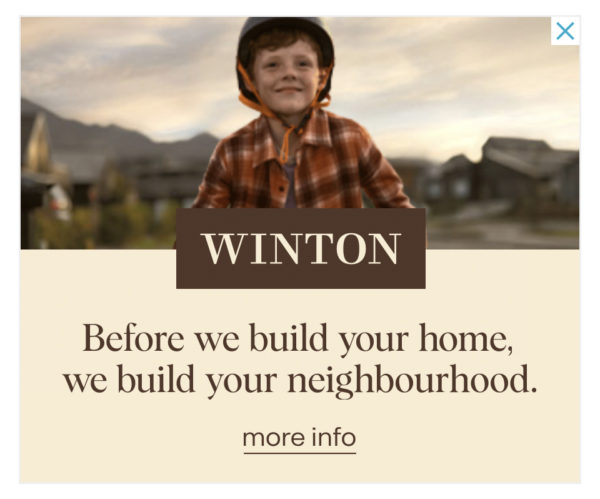
- Holiday parks and campgrounds and beach towns. Even if you get there by car, you gladly ditch it for the greater pleasures of daily barefoot walks, or a bike to the dairy on the rusty beach bike.
I've come to the conclusion that the sign of a thriving NZ beach town is a little collection of bicycles by every cafe, shop & path to the beach. pic.twitter.com/Ntv4VNqNrT
— Kathryn King (@KingCyclesAkl) January 21, 2018
- And the correlative: Auckland over the summer holidays, when streets fall strangely silent, and going for a bike ride feels like time-travelling back to the 1980s when there were half as many cars on the road.
New Zealanders, as much as anyone, get the value of a “village” vibe. Heck, some people pay a premium for it!
Joining the dots
As the impacts of climate change swirl around us, so many of today’s worries are going to look very different in the rear-view mirror. One thing we do know is that the road ahead will necessarily involve a lot less ferrying ourselves and others around in cars, across the board.
This opens up a lot of avenues for less stress and more resource in our daily lives. More ways in which we can flourish and add a little extra time to our day.
What I’m getting at is: we never needed a pandemic to taste the possibilities of a life less trafficky, or to see the room we have to manoeuvre.
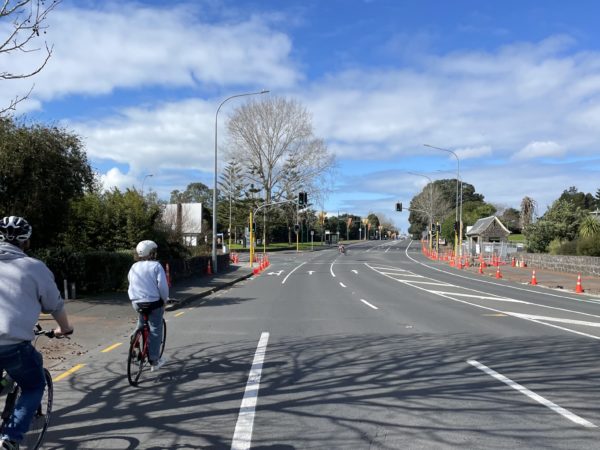
But we’re here now (again). This time, are we ready to test ways we can hold onto the good bits?
Our councils, ministers, and transport agencies hold responsibility for reshaping public spaces for better. It’s now a race against time, with climate change-driven weather events already reshaping them for the worse.
The bit we’re in charge of is how we feel about proactive change: how we adapt, and how we help others find their own reasons to join in. This is why it helps to pay attention to how we feel about quieter streets, and how we discuss them with our friends and neighbours.
Change is challenging, for sure. But what if it also felt like a window opening, like a holiday, like a childhood memory, like a treat? Can we see ourselves in that story?
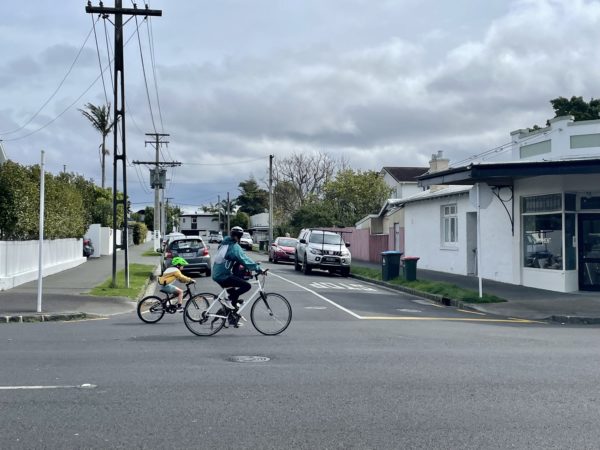
A Low-Traffic Neighbourhood by any other name would smell as sweet
We could call it… a place where people work from home when they can, so others can come and go more easily. A place where essential workers and caregivers and deliverers and people who have no choice but to drive don’t have to battle with inessential traffic to get where they’re going.
A place rich in low-carbon transport options, whether it’s all-day buses and trains connecting you to the rest of the city, your bike, a rack of scooters on every block, a shared fleet of electric cars.

A place where your groceries or library books or even healthcare might just as easily come to you by cargo bike or electric van, saving you the need to take a car and pay for parking.
A place where most of your everyday needs are no more than fifteen minutes away. A place where local bulletin boards overflow with creative solutions, support for those in greatest need, and bringing the community together to see the big picture.

A place where kids don’t need constant chauffeuring, let alone to and from school. A place where a child wouldn’t think twice about biking to meet a friend, or walking to the shop to fetch a ‘last-minute’ item while you get on with the dinner.
A place where heading out without the car is a perfectly reasonable choice that adds life to your day, and maybe even days to your life.

So I think it’s okay to find some solace in our current quiet streets – a glimmer of active hope, even. They remind us there is a less stressful world for the taking, outside the front gate. The quiet streets of lockdown aren’t normal. But they could be.
You don’t have to time-travel, or fly to Europe, or wait for the holidays (or wish you could afford one), or buy your way into a fancy neighbourhood. We can start right where we are.

 Processing...
Processing...
They tried bringing in an LTN in Onehunga and the community engaged in direct action against it with a forklift. People don’t want to be reminded of lockdown. Although it was totally necessary, it was only a *pleasant* memory for people with email jobs (of whom I’m one, but I know I’m not representative)
I live on the edge of the Onehunga LTN and frequently bike through on my way to work. I also know some who were involved in implementing it,families with kids painting the road and the boxes. There was only one guy driving the forklift. So I don’t think one person on a forklift represents the community. I agree opinion was split but they guy created a dangerous situation and forced the trial to end early assuming he was speaking for the people but maybe only the noisy ones on the Facebook group?
It sucks now, cars always squeezing past only for me to often end up catching up and having to stop or pass as they can’t fit safely through the narrow streets at speed.
I was working on site in food manufacturing BTW. I went and got my tests and vaccine by bike which was pleasant to do with so little traffic. Not an email based job sorry.
Living on Arthur Street, my family and the other young families around us, (the community you could say) have talked many times about how good the LTN was. The rat runners boosting along Arthur Street are a bad outcome for the actual community. I’d like to have enough spare cash to buy two old beater cars, keep them WOF’d and Reg’d but park them opposite each other far enough from the kerb to create a give way situation aiming to deter rat running, kind of the opposite of the guy on a fork lift.
Goddamn that is a genius idea!
Those were the days .I met more families in the first lock down than I had met before or since .Families were out walking the dog or just walking the family and would stop for a chat if I was out in the garden .So much like when I was a kid 60 years before.One fellow even related how it made him realize what a shit father and husband he was before the pandemic .He resolved not to return to his former job which was making him that way because of the long days and pressure from his employer which prevented him from spending quality time with his family .He managed to get covid recovery finance and started his own business growing native trees for reparian planting .Now a happy family where we hear children playing and laughing instead of yelling and crying .
ahhh memories…
Heck even London has been implementing low traffic neighbourhoods at scale.
Try the 3-30 Challenge.
In your home (or anyone else’s) local neighbourhood streets, drive for 3 weeks at not more than 30 km/h for up to 3 minutes. You are almost certain to have reached a high-traffic road, or at least a bus route, well before 3 minutes from home.
See how you feel about driving like that – it’s quite calming emotionally (except when you were going to arrive late somewhere, anyhow).
Stats NZ said today to 1 in 6 of the workforce now work at home. Driving to work has increased and PT use for commuting in Auckland and Wellington is slightly down. The 17.7% of the workforce now working from home should mean we can start reducing the horrendous amounts spent on transport in NZ and move it to health and education where it will do more good.
Computer says no. Computer also says East West Link with Cherry on Top.
(Except the cherry will be sour, as it will be Simeon removing all the cycleways in the originally applied-for-design for an extra lane each way in the name of economic efficiency).
The USA wastes all its wealth on wars, preparing for wars and creating wars. In this country we waste it on motorways, underground railways and pointless road widening. Imagine how much better off we could be if we saved that money.
Sadly more pressure to work from office again, which will mean more traffic and busier public transport.